2009: In the Wilderness
2009 is when I really started getting involved with Art Fag and Zoo Music. You wouldn't know it from the blog- I think maybe it was the end of 2009 when I started talking to Brandon and Kristin about Zoo Music and then I helped Mario with pressing and repressing the Best Coast 7" that he had put out on Art Fag Recordings earlier that year. Meanwhile, on the blog I was just all over the place. I was proud of the two series I kept- my posts about William Vollmann's book about Imperial County and those about 'The Shape of Ancient Thought' by Thomas McEvilley. In 2009, I knew I had lost my audience- when the blog was really focused on local music in 2006 and 2007 I was close to being a local celebrity in the music scene which I found sad and annoying. Like, I knew by 2008 I wasn't going to be a local music guy and I didn't love spending all my times at shows in San Diego. Starting in 2010 and 2011 the Zoo Music stuff started to kick in and that stuff really took over the blog for a couple years.
FRIDAY: Got to the show at about 7 PM- I know this because I had to cringe my way past the opening chords of Franz Ferdinand. Saw Crystal Castles, which is one of those bands I have scrupulously avoided even though I know the formula (screamy girl singer + 8 bit sounds) is something I would enjoy. They had the Sahara tent going. They are from Canada? That was a theme for me. Ate food and listened to boring Leonard Cohen. Outdoor Theater was an indie-nightmare (See Fleet Foxes.) Highlight: Hearing that song from the Natural Born Killers sound track, which shows you both how old I am AND how little I care about the music of Leonard Cohen.
Girl Talk in the Sahara tent was a poor-sounding disappointment. Whatever magic Girl Talk has live was dissipated by the size of the venue and the FACT that lap top music doesn't translate well in big-tent/arena type venues. Something about the compression of the audio, I would imagine.
Made VIP chit-chat with Tim Pyles & Tim Mays during Morrisey. Waiting for Genghis Tron we saw the delightful A Place to Bury Strangers: think My Bloody Valentine, Interpol.
Highlight of Friday was Genghis Tron: Thunderous screamy hard core with Ratatat style electronic keyboards/organs. Charismatic, energetic lead singer. Bought the record. There were maybe five hundred people there. I have included a photograph I took just moments before the set began, which show you how few people were there. Pretty awesome.
 Genghis Tron at Coachella 2009
Genghis Tron at Coachella 2009Left to strains of "Wings" era Paul McCartney. Sorry. No.
SATURDAY: Um, I didn't see a single band on Saturday. What a fucking nightmare.
SUNDAY: Got there at 130 PM to see SUPERMAYER. Let me just throw out the fact that I would pay $35-40 to see them in a club in San Diego/Los Angeles/San Francisco- I'd buy multiple tickets, go with my friends, etc. If any booking people are reading up and pondering whether to book them in one of those markets. Barry Weaver. Friendly Fires was a much-anticipated act and their Dancey-Rock really set the crowd on fire, recalling earlier performances by !!!. Coachella is the place to go to sell your brand of Anglo dance rock to the U.S. audience. If you're looking to break one of these foreign dance rock bands: Sunday afternoon slot at Coachella. Fellas, this band will get you laid.
FUCKED UP is a hardcore/post-hardcore act from Toronto (Canadian alert!) They've been around since 2002 but Matador signed them in 2008 (and they only put out 7"s for four years) so this was kind of like seeing a legendary genre act in an unusual environment. I've been listening to the Matador Record- which is a comp. of their earlier output basically(?) and it has held my interest though often in the form of "What the fucking fuck, do I really have time for this 9 minute track of ambient noise. I also confuse them with Fuck Buttons, but after seeing the live show that will never happen again.
Probably the best single performance at Coachella (and this includes all the artists I didn't see, but about whose performances I've read about) this year was by French electro impressario Sebastian Tellier. Holy cow did he bring the fucking thunder. This guy is amazing- CDW said, "He is like Serge Gainsbourg." This was literally the only band that Josh SESAC wanted to see. Some observations from this set:
1. He brought a look alike roady with him- dressed the same, same facial hair, etc.
2. He proclaimed that the second song was about his "bisexuality." Incredible.
3. Ended the set- and this is a one hour set- with a 15 minute free jazz key board jam that was actually really good.
I was really impressed with the performance.
Here are my take-away bullet points from Coachella 2009:
1. In: Noise rock, hard core, indie-folk
Out: trance dj's, alt rock, metal
2. Please do something about the outdoor theater sound bleed through.
3. Never book the Thievery Corporation again.
Reviewed here
Rig Veda
Wendy Doniger, editor
Penguin Press
The Getty Villa Malibu
17985 Pacific Coast Hwy
Malibu, CA 90265
(310) 440-7300
Starring Jack Black & Michael Cera
The editor, Wendy Doniger, is no stuffy Orientalist. This book review is basically an excuse for me to write another mash note to Doniger, a professor of Sanskrit at University of Chicago. She drives certain Hindus nuts with her unearthing and recontextualizing of some materials (specifically as they relate to women and sex) but I find her work to be comprehensible to anyone with a college degree and therefore very useful. You don't have to believe everything she says is true, she's arguing positions.
The text itself is organized thematically "Hymns to the Sun God," "Hymns to the Dawn," "Women." The historical title for the Rig Veda is something like "The 108 Hymns of the Rig Veda" and is somewhat analogous to the "book of psalms" in the Bible. That 108 number was more a reflection of Hindu numerology then any actually reference to a specific canon, and thus Doniger and Penguin Press have dispensed with that fake organizing mechanism.
Although I certainly didn't really get into every nook and cranny, I found enough here to spur me to read more books from this tradition- next up is the Doniger edited "Laws of Manu."
The Getty Villa Malibu
First of all, the Getty Villa Malibu is exactly what you think it is- fucking amazing. It's the Getty. Villa. in Malibu. Well, I think Pacific Palisades to be exact but who's counting? Admission is free, but you should call ahead (although if you show up and look respectable the first guard probably has passes- don't be a dick to him!
Second of all, I want to say that I've been to these European style villa/museums.
Here's one from Sevilla, it's called the Hospital de Venerables Sacerdotes in Sevilla:
But the thing to take away here is that the evolution of Greek Indo European culture took place in the context of an already developing middle east with a totally separate tradition. You can think of the classical greeks (and they latins, and the etruscans) as being early variations on the Goths who raided the Roman Empire.
It's important to realize how Greek civilisation, in particular, blended Indo European traditions with the traditions of the Middle Eastern cultures which preceded it. Aphrodite, for example, is a very Middle Eastern goddess figure that shows up nowhere in the other Indo European dervied cultures. Of course, Judaism was a religion that derived from Middle Eastern tradition, not "indo european" and, according to Niezche (he was really controversial on this subject, as was Hitler) so was Christianity.
It all goes to say that the Getty Malibu is a great place to check out, and if you live in West LA and don't go you are a sucker.
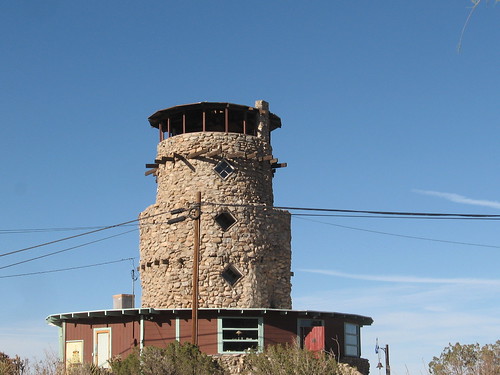
Vollmann Diaries is a multi-part review of Imperial by William T. Vollmann, published on July 30th, 2009 and obtained by me on August 10th, 2009. (Amazon)
Almost every reviewer of Imperial by William T. Vollmann asks the question "Who wants to read 1300 pages about Imperial County and environs?" like there is nobody out there interested in the subject. Well, I am. This book is probably the most significant book of any kind to be published about Imperial County. I know, because I have researched the issue. I personally asked Mike Davis, author of City of Quartz, "Do you know of any books that focus on Imperial County? His answer, "Maybe a graduate thesis or two, that's all I know about." So.
Imperial is 20 chapters plus. The first chapter is basically an extended length Vollmann-style piece of magazine journalism about the people-who-cross-the-border or "bodies" as Vollmann calls them. Each chapter carries a date that correlates to a specific year that Vollmann was doing the field research to write Imperial. One of my earliest memories of San Diego (living here) was reading in the San Diego Reader about how Vollmann was coming down here for a book. We're talking 2001-02. The first chapter is set in "1999" and the "pre-9/11ness" of the setting is not only apparent, but commented on by Vollmann-the-author.
I write this as someone who is deeply, deeply interested in the Mexicali/Calexico border. It is, in fact, about 20% of my job to drive out to El Centro and handle Federal criminal cases out there. I would read a 500 page book by Vollmann on the subject of chapter one. I have been to some of the places he describes, and I am deeply, deeply impressed by the level of thought he has brought to bear on this subject: crossing the border. I know Vollmann's characters in this chapter, and I can personally attest to the accuracy of Vollmann's depiction.
But as for criticism, the border is too obvious a place to launch such an endeavor. I would have preferred a chapter on the natural history of the mountains that separate imperial valley from the coast. I think the mountains to the west of the Imperial valley are deeply interesting. It is only an accident of civilization that they have not been celebrated in myth & legend for thousands of years. I guess it's entirely possible that Vollmann will get to it, but I would have liked to read about it first.
Ricky Ross bought his kilos from a a Nicaraguan cat named Danilo Blandon. Danilo Blandon happened to work with the CIA. That's how the CIA got involved in the crack game in South Central Los Angeles.
Published 8/12/09
Vollmann Diaries 2: New River//\Salton Sea
Vollmann Diaries is a multi-part review of Imperial by William T. Vollmann, published on July 30th, 2009 and obtained by me on August 10th, 2009. (Amazon)
Vollmann Diaries 1: Border Crossing//Desert Tower
In 2007, I found myself in the position of having to drive to El Centro, CA after the end of Coachella Arts and Music Festival. I was excited, because I wanted to see the Salton Sea, certainly an object of fascination for me going back to 2002. My wife was also interested in seeing the Salton Sea. Here is a photograph of me at the Salton Sea Beach. It was incredible. The desolate moonscape of Salton City is just about everything you need to know about what the whole world will be like after we destroy our civilization. If you really want an illustration of that environment, go to Google Maps and type in "Salton City, CA." then zoom into a neighborhood level view and toggle between "street" view and "satellite" view. Epic fail.
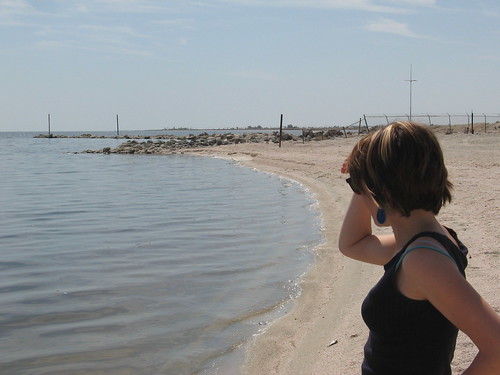
Waters of Life, if the third chapter in William T. Vollman's "Imperial." Like the other chapters, Waters of Life carries a specific year as date. In this case it's "2001." Waters of Life is an exploration by the Vollmann character of the Mexicali-to-Salton Sea New River and of the Salton Sea itself. The action in this chapter are a couple of boat rides, capped by a chemical test of the water to see how polluted it actually it is. The verdict? It's actually not that bad- it looks (and smells) worse then it is.

Vollmann expresses exhilaration at his raft ride on the New River between the Mexicali/Calecxio border to south of the Freeway 8, describing it as akin to exploring pre-Columbian America, so destitute of visitors is this river. But it's all about the stink, and the heat, and the stink. At one point Vollmann describes the smell of death on the Mexican side of the river to be "so bad as to actually smell like a strong cheese." Shudder.
One thing he doesn't do is make any references to Egypt or the Nile, or classical Greece or Roman. I don't know if Vollmann is going to save that for later or what, but it's fact that Imperial Valley was often compared to the Nile River delta in its early days, and the New River is obviously at least analogous to the Nile. It also occurs to me that based on the heat, and the stink, and the fact that you will die in the water itself, a comparison to Hades or the river Styx would be a suitable metaphor. Minor criticisms, though.
I am looking out my office window to the east, contemplating the fog that shrouds Golden Hill. The temperature in the Imperial Valley today is predicted to reach a high of 106, but we all know how hot asphalt can get. As always, my thoughts are of what would happen were my car to break down in such conditions. Fortunately the road is well traveled, so death is unlikely. As long as you don't get out and walk. That could end up being a real mistake.

Vollmann Diaries 3: Into Mexico
Vollmann Diaries is a multi-part review of Imperial by William T. Vollmann, published on July 30th, 2009 and obtained by me on August 10th, 2009. (Amazon)
Vollmann Diaries 1: Border Crossing//Desert Tower
Vollmann Diaries 2: New River//\Salton Sea
Vollmann himself was in town last night, he appeared at Warwicks, on Girard St. in La Jolla, CA. I didn't go, even though he's my favorite author, for two reasons. One, I had already agreed to let 2/4 dum dum girls practice in my office last night. Two, I really hate author readings. Isn't the whole point of being an author NOT having to tour and do publicity? Also, a reader pointed out this KPBS interview from yesterday.
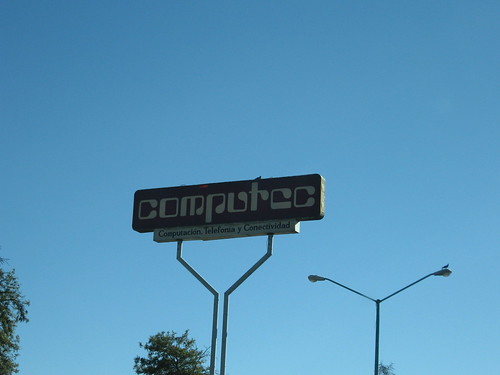
I was in El Centro yesterday, and driving back I headed out west on Adams Ave. During the drive I was thinking about what John Adams, prudish whig that he was, would think of the Imperial Valley landscape. I crossed over interstate 8 just east of where the New River intersects the freeway: there is an rv park close to the freeway, but as you precede south, there is no viewpoint for the river. No bridge over the river. For miles south of the interstate. Strange, but in line with Vollmanns observations.
 l
lClosing in on the 175 page mark, Vollmann has firmly moved south of the border: after two shortish literary type chapters, one about a failed relationship of Vollmann the narrator and the other a brief metaphysical excursions, he settles in to a discussion of the Colorado River and the environmental degradation that it has suffered at the hands of the United States and our water thirsty society. He also focuses on how people kind of ignore it. That is a recurring theme. In fact, between chapters 5 and 6 Vollmann inserts a sign post which says "I'm going to use statistics in this book!" as a kind of warning to the reader.
In Chapter Seven, Vollmann explores the folk religion of Mexicans as embodied by the Maria de Guadalupe. She is a fusion deity born of the combination of Catholicism and Aztec religion. I have noticed that Vollmann employs the technique of importing academic/non-literary disciplines into what is a classic "work of literature." This ia an approach to writing literature I appreciate. Literature should reflect the world around it, and we are unquestionably a society of "technical experts" with specialties. It is not enough in this world to advocate for an ideology, statistics must be employed, no matter the non-technical nature of argument.
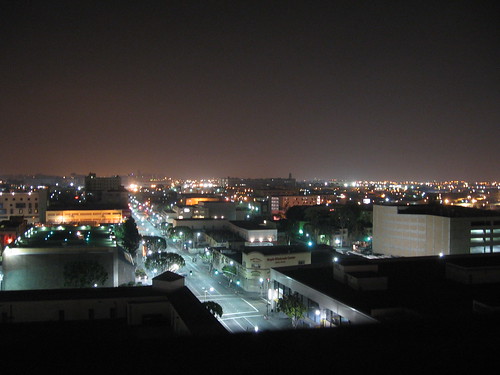
Published 8/14/109
Does art exist without an audience to appreciate it? It does, because provided the cultural product continues to exist, an audience could exist at a later point in time. That scenario (an audience appreciating something later in time) is growing increasingly unlikely because of the absolute, verifiable proliferation of new cultural products created by advances in technology and mechanical duplication.
So- that being the case- I would argue that in this day and age, for all forms of cultural product, the audience is actually more important then the artist him/herself. You say: Without the art, the audience doesn't exist. But really, if you think about it- isn't it the opposite? Without the audience, the artist doesn't exist, and the more cultural product being produced, the more important the role of the audience.
It's always true for cultural products (up to and including "language" and "religion") that if something is not remembered by anyone, it ceases to exist.
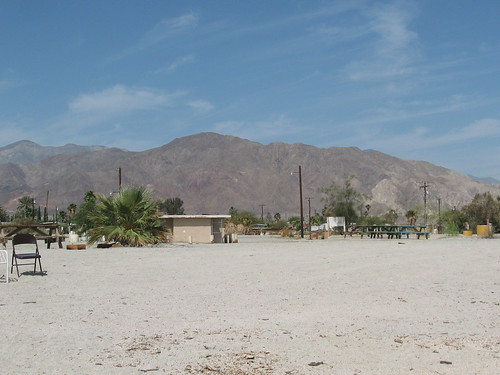
Do you know how many civilisations have been buried beneath the sands of time? Great, epic civilisations, which have vanished from memory and thereby from history. William Vollmann does. Imperial is his attempt, in book format, to post a warning on the path ahead. Imperial is, quite explicitly, an instructional device.
I think Vollmann loves Imperial in the same way I do: Because it is here that you see all of what we are.
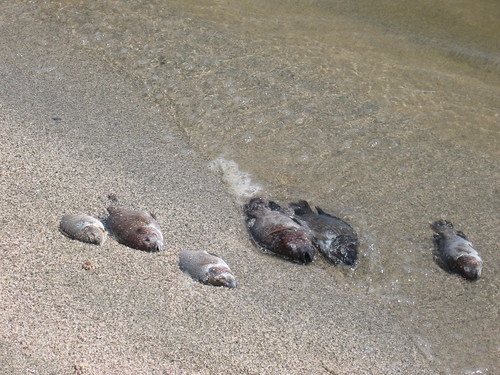
Yesterday, I had the occasion to sit in a from for several hours and read Imperial. I made it past page 350, which seems like a very "blog" thing to say. You'll never read THAT sentence in a local daily book review. Here's something else the newspapers will never get- it's all about the photos. People love images.
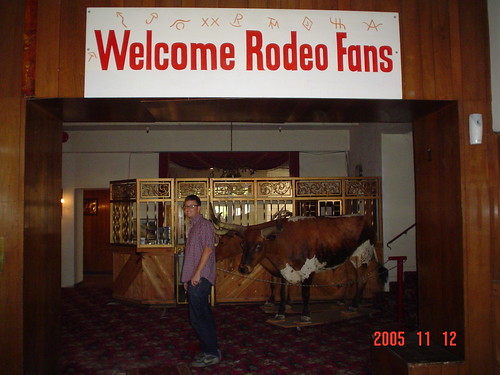
The photograph above is from the rodeo Sophie and I went to in 2005 in Brawley, CA. Brawley is smack in the central of Imperial. Maybe it's the spiritual capital of that place. People thought we were nuts. The fact that we both were equally excited to go- that's what you call a "soul mate" as they say.
As Vollmann moves out of his throat clearing mode, Imperial begins to move away from the border and Imperial county, and out towards Los Angeles, Riverside & San Diego. He maintains the convention of tagging each chapter with a year (or year range), making some of the chapters sound like history texts "Los Angeles: 1792-1945." Vollmann "moves the camera" from location to location and time to time with ease. After all, one thing Vollmann knows how to do in his writing is manipulate time and space over pages and pages of text.
Around page 250 I almost began to feel that Vollmann was literally building in an indictment, that Vollmann-the-narrator is showing a jury the evidence to support his proposition: That "Imperial" is all of America writ little- a microcosm. Reading yesterday, I realized that Vollmann does indeed intend to bring older civilizations to bear- he quotes from an ancient Sumerian text that analogizes a river to a "giving" woman.
I also begin to sense the swell of narrative- he continues to hint at his investigation into Chinese caves in Mexicali- a subject that I have heard discussed- though not in Mexicali. I suppose it will either be a climax, and anti-climax, or nothing at all, depending on Vollmann's artistic intent.
I identify with Vollmann's 1300+ page work. As a blogger, as a consumer, as a reader. This is what our world is like. To write long books is to say "the world is a very interesting place." To read long books says "I believe the world is an interesting place." And it is.
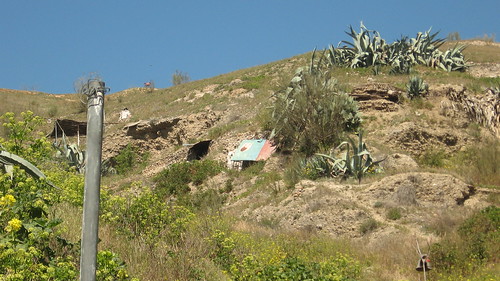
Published 8/15/09
Vollmann Diaries 5: The Chinese Tunnels of Mexicali
I had heard about the Chinese caves/tunnels of Mexicali Mexico before I read Imperial. Independently of that awareness, I maintain an active interest in cave/tunnel dwellings of any sort. I think it's the idea of "living in the earth" that attracts me. Above is a photograph of the gypsy caves of the sacromonte district just outside of Cordoba, Spain. The settlement of the caves in Spain is related to the utter collapse of society in between Roman and Muslim control and so the caves, despite their historical pedigree and attempts by the government to class the place up for educational purposes, maintain a tingly sense of nascent (or on going) collapse.
It's funny living in caves in Spain, versus tunnels on the United States/Mexican border. In the course of writing a central chapter of one of the best books written in a long while, Vollmann conclusively proves the existence of Chinese created tunnel networks underneath the streets of Mexicali. These tunnels exist in an "urban legend" state on the United States side of the border. I can attest personally to that attitude among residents of El Centro CA. This denial/ignoring of a very real, interesting phenomenon is a microcosm of Vollmann's approach in Imperial. Here, he is working with a real myth: His trips into the tunnels underlying historic China town in have all the excitement and tension of your standard Indiana Jones movie.

Vollmann writes about his investigation into the tunnels, which involves at least twenty different interviews, employing chinese translators and even hiring a pair of Chinese-American women from Sacramento in an attempt to penetrate the tight-knit Mexican-Chinese community of Mexicali, Mexico. He places the community in the context of 19th and 20th century economic and labor history: The Chinese, like the Chinese in other Pacific coast communities, came to work and build towards a middle class shop-keeping existence. To this day, that population persists in Mexicali.
In the end, the mysticism and magic is stripped away, as is ignorance, and the "truth" is revealed, these tunnels were constructed to help early chinese immigrants cope with the heat by allowing for an underground "hanging out" area. With the invention of air conditioning and multiple fires, the tunnels found into disuse, and then they were ignored after.

I'm reminded to my trip to Cordoba, Spain. Cordoba is the location of an amazing Muslim era fortress/castle called the Alcazar. The Alcazar was literally being ignored to death in the 18th century when American diplomat and author Washington Irving (the legend of sleepy hollow) wrote about "rediscovering" the fortress in a state of negliect. It is now the largest tourist attraction in the country of Spain.
I'm close to being 500 pages in. I feel like the Chinese Tunnels chapter alone could be a satisfactory conclusion to Imperial, but I do feel compelled to read on. I am in awe of Vollmann's technique.
 The sun setting over San Diego Bay, August 16th 2009.
The sun setting over San Diego Bay, August 16th 2009.Published 8/17/09
Vollmann Diaries 6: To El Centro and Return
I didn't read much further in Imperial yesterday because I had to drive to the Imperial County jail in El Centro, CA. to see some new clients of mine. Above is a photograph of the sun setting over the San Diego harbor. The sun doesn't care whether humans live or die- no matter how much we worship it as a deity. 75 degrees, 150 degrees, it really just doesn't matter to the sun.
 Imperial Rothko
Imperial RothkoI was flipping through the 100+ pages of source notes at the end of Imperial and I noticed that Vollmann included a book about the American painter Mark Rothko. I thought that was funny, because I've often thought the landscape "out there" resembled a Rothko painting. The same could likely be said for any flat midwestern or western landscape.
 Signal Mountain(?), Carrizo Mountain(?), Imperial County CA
Signal Mountain(?), Carrizo Mountain(?), Imperial County CAAfter my jail visits I drove west through the farm land. The road twisted and turned based on no discernible relationship to the flat, featureless landscape. I found myself in front of a mid-century designed house/office which had "Brock Asparagus" on a sign written out front. Finally, rising out of the desert, what I believe to be Signal Mountain, as described by Vollmann, rose out of the desert in front of me. On Google Maps, this mountain has no name, although it appears to have a small town at its top called "el centinela"- "The Sentinel?" Maybe Google Maps interpolated the spanish name of the mountain and made it the name of a town they believe exists on top of the mountain. I don't know. (I turn Google Maps to "Satellite" and zoom in on Centinela- there is no town up there.)
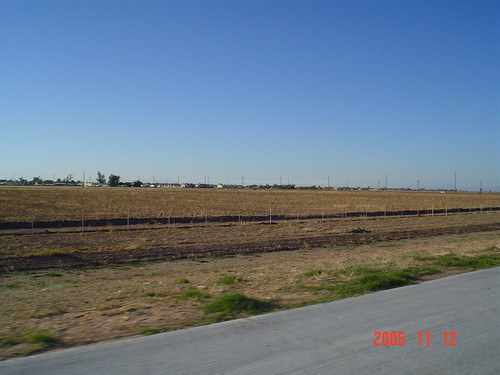
Let me ask you reader: What do you THINK happened when labor organizers tried to get involved with Imperial valley labor conditions? Oh, it was a bloody mess I can assure you. Well, maybe not so troubling if you are a fan of right-wing police state tactics like: American legionnaires kidnapping an ACLU lawyer from his hotel room and leaving him to die, naked, in the desert. Like: The brutal beating of a lawyer on the steps of the court house by county employees. This is not to say what happened to the Mexicans. I think you can guess.
In parts 7 & 8 of Imperial, Vollmann gets into the "What happened here?" question by means of statistics. What is the average size of a farm in Imperial over time? What are the prices of crops in Imperial over time? He uses graphs a-plenty. I suppose this is what he warned readers back on page 3, but for me this is central to what makes this book great. Vollmann is saying things not said. Things not said by Mike Davis, famed author of City of Quartz, who looked at me blankly when I asked him if there were any books "like his" about the Imperial Valley.
Vollmann concludes that the story of Imperial is the story of smaller "family" farmers giving way to large, absentee corporate farmers. So what else is new? But Vollmann links that story to individual's whose lives he traces using public records. One rancher who killed himself, another who left a bitter memoir at the local museum depository.
After his discussions of labor politics he practically apologizes for the absence of material related to Native Americans. I find this understandable, but almost inexcusable. It's hard for me to believe that he didn't have money to do the work, but that's what the Vollmann-as-narrator. The paucity of the chapter on Native American inhabitants of Imperial is my only significant criticism of Imperial to this date.
Thomas McEvilley on 'The Shape of Ancient Thought' -
I'm reading this book: The Shape of Ancient Thought by Thomas McEvilley. He's kind of a kook but I think he is right... Enjoy! Also: The shape of ancient thought is "a circle." A circle. He took 30 years to write this book. (AMAZON)
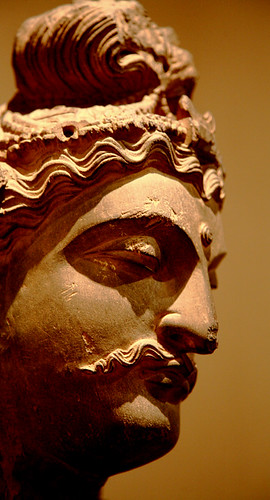
I was reading the books reviewed above and thinking about the relationship between East & West and I was kind of thinking, "There is no way that Greek philosophy and Upanishads era Hinduism/Buddhism arose independently of one another- they have to be related."
First of all, Sanskrit and Greek come from the same body of languages. Second of all, the Indians and the Greeks were in contact with one another because the Persian empire owned parts of both of em back in the day. Third of all, once you learn that the pre-Socratic Greek philosophers had a similar take on the reincarnation/escaping reincarnation situation to the Upanishads.... well... I know this is an area fraught with cultural baggage, but it just seems hard to ignore.
So I found "The Shape of Ancient Thought" after basically thinking about the ideas in the paragraph written above, which I only put together after reading the basics of Hindu texts. Amazingly, it is a book devoted entirely to explicating the relationship between Greek philosophy and Buddhist/Upanishad era Hinduism. Below is the part where he describes BOTH Greek philosophy and Indian Buddhist/Hindu philosophy in 16 lines. Amazing:
1) The development of abstract rather then mythic conceptualization.(GOOGLE BOOKS)
2) Philosophical monism, including the concept of an absolute and formless reality which is somehow "higher" than contingent and formed reality
3) A doctrine that the realm of change and form is an illusion essentially non existent
4) Within this illusion, human life is governed by a burdensome cycle of reincarnations following
5) A law of moral amd cognitive evolution from one incarnation to the next which can be escaped through
6) The practice of non violence, including relgious vegetarianism, which along with other practices, will lead to
7) A kind of absolute knowledge or transcendent state of mind which constitutes
8) Release from the cycle of reincarnations and
9) Merging into the overall oneness which transcends specific form
10) Time is a cyclical process in which the universe flows from unity to multiplicity and back again
11) In the material realm, the four elements - earth air fire water act as mediators between one and many
12) Materialistic atomism arises, as if reflexively, as an alternative to monism, with the intension of redeeming the reality of the many.
13) The process of condensation and rarefaction offers a mechanism of transition between one and many
14) A theory of universal flux leads to a conviction of
15) The impossibility of knowlege and the inadequcy of langauge
16) Reality is defined through a paradoxical discourse for example that it is characterized by both being and non being.

Shape of Ancient Thought 3:
Let's talk about Hercules for a minute. Facts about Hercules:
- Heroic semi-divine figure from Greek myth. In ancient mythology the man Hercules myth was his "12 labors." He was also a favorite subject for both Greek and Roman artists.
- Greek Hercules was inspired by the Babylonian/Sumerian hero-figure Gilgamesh.
- Hercules is always depicted in possession of a club and an animal skin.
In Shape of Ancient Thought, McEvilley uses "3" to try to link up Hercules w/ late ancient period "tantric" practices, which he postulates were old Dravidian believes that became "sub-strata" (i.e. were brutally opressed) during the Aryan invasion. He points to the fact that tantric/holy-crazy men wanderers dressed in animal skins, acted like animals, and carried a club/staff as their only possession.
I say "wahhhh wahhhhhhhh" to that idea because first of all, dressing up in an animal skin is probably the most common, basic shamanic practice of all cultures. See, for example, A.L Kroeber's hand book of the Native Californians, where almost all of these totally isolated tribes practices some version of the "bear dance." I think the best you can say is that the depiction of Hercules has some antecedent in shamnic practice... but then again: Don't we all?

Published 8/31/09
Shape of Ancient Thought 4:
I'm half-way through Thomas McEvilley's(wiki) half amazing/half crazy book about the ancient world called "The Shape of Ancient Thought." McEvilley is making the case that 1) ALL civilization draws influence from the ancient Sumerian's, because they were "first" as they say in the blogosphere. 2) Greek & Indian civilization basically bore the same fruit of this influence, and then swapped it back and forth through the Persian, Hellenistic, and Roman Empires for about a thousand years till you ended up with Western civilization, Buddhist civilization and Indian civilization. This is a discussion that is fraught with colonialist issues (Western civilization is superior to Eastern civilization) and post-colonial issues (Indian civilization didn't need ANY HELP from ANYONE to create it's religions etc.) So you have to read books like this with a jaundiced eye, even when they claim to be cognizant of the debate, because we are talking about stuff people feel passionately about i.e. which came first, western civilization or eastern civilization? It's important to a lot of people, even if it isn't to me. I think I probably agree that Sumerian math and religion inspired both India and Greece, but I'm less sure about the "continuing dialogue" part of the argument. He still has 300+ pages to win me over.
Probably the best illustration of this hypothesis is the graphic above, which is of Ningishzida, an ancient Mesopotamian god of the underworld AND, as it would turn out the god of MEDICINE. Here is the symbol we in the west equate with medicine:


Guru Rinpoche: TIbetan Buddhism is Madhyamaka inspired Buddhism.
Published 9/1/09
Shape of Ancient Thought 5:
Pyrrhonism (wiki)
Madhyamaka (wiki)
Around page 400, McEvilley makes his move and posits that Pyrrhonism, a "a school of skepticism founded by Aenesidemus in the first century BC" is ultimately responsible for inspiring the Madhyamaka school of Buddhism, which is the earliest recorded evidence of logically rigorous philosophical thought. I think probably the essential weakness in his argument is the lack of chronology among documents pertaining to the Madhyamaka school of Buddhism. The central premise of his argument is that Pyrrhon, through his historically documented travels to Indo-Greece, diffused to the thinkers who laid out the tenets of Madhyamak Buddhism, which then diffused to Hinduism in the Upanshadic period (I think.) McEvilley also has another one of those great lists he generates,this one comparing Stoic/Cynic era Greek/Roman philosophy and Madhymak Buddhism:
1) Overhwelming emphasis on teaching by example rather then discourse
2) Frequent use of perverse, irrational or violent examples.
3) A requirement of total dedication and of signs of total dedication, from the student
4) The use of shocking and enigmatic verbl fomulae as teaching devices.
5) An emphasis on hardihood, indifference to pheomena and extreme simplicity or frugality of phycical milleu.
6) A mirthful attitude which expresses itself as ridicule of convention.
7) Extreme self possession, a mental balance impossible to disturb
8) A tendency to reject or neglect inherited doctrines such as reincarnation and purification, preferring the emptiness of no-doctrine.
To me this is like the ingredients of a religion. The elements, if you will.
 Wendy Doniger.
Wendy Doniger.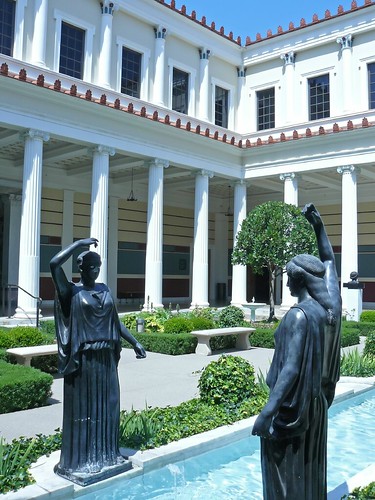
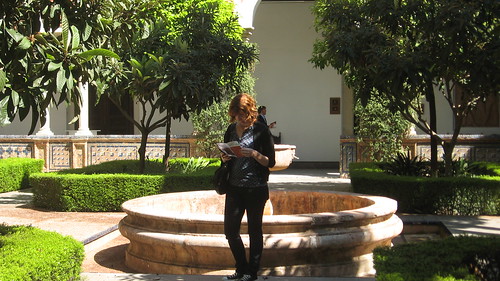
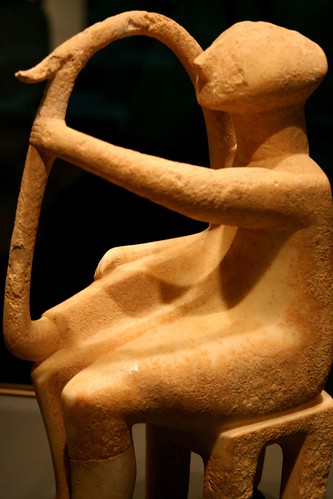
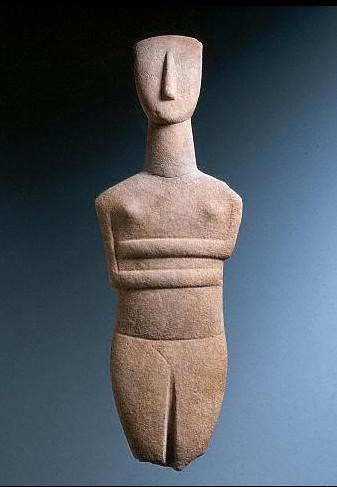
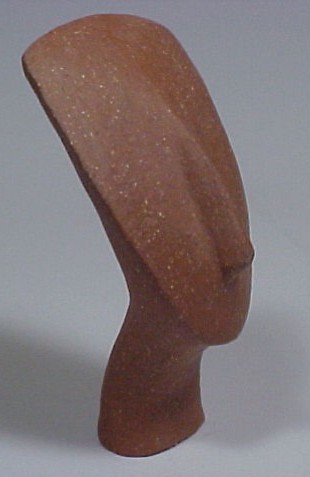

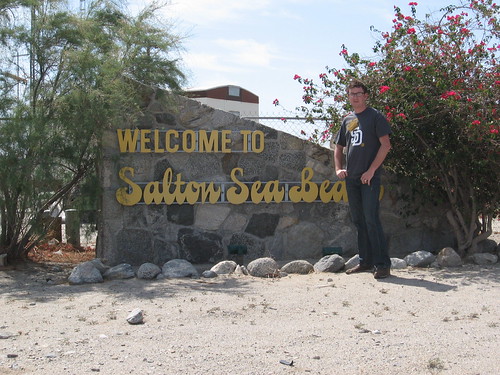
 Instagram
Instagram
No comments:
Post a Comment